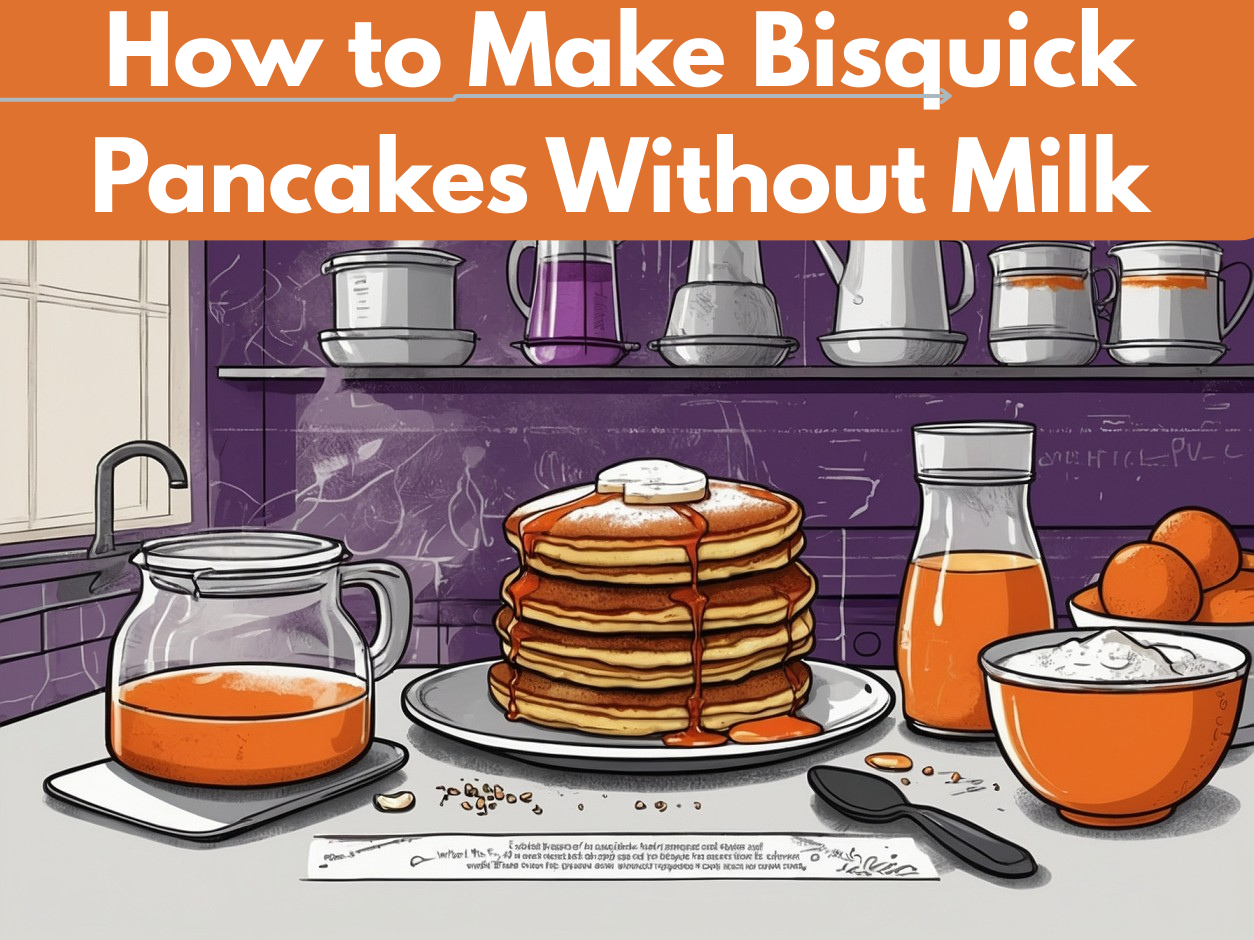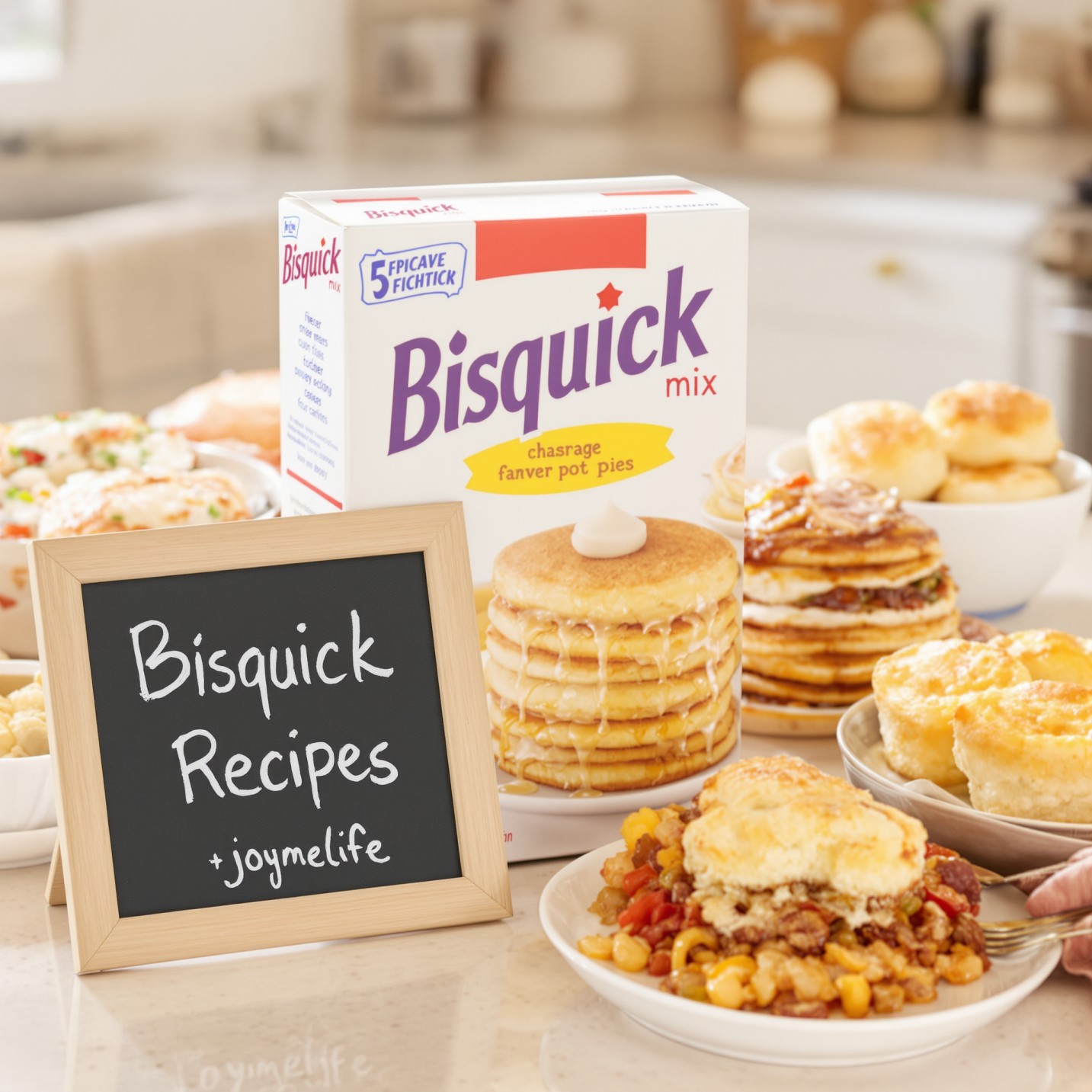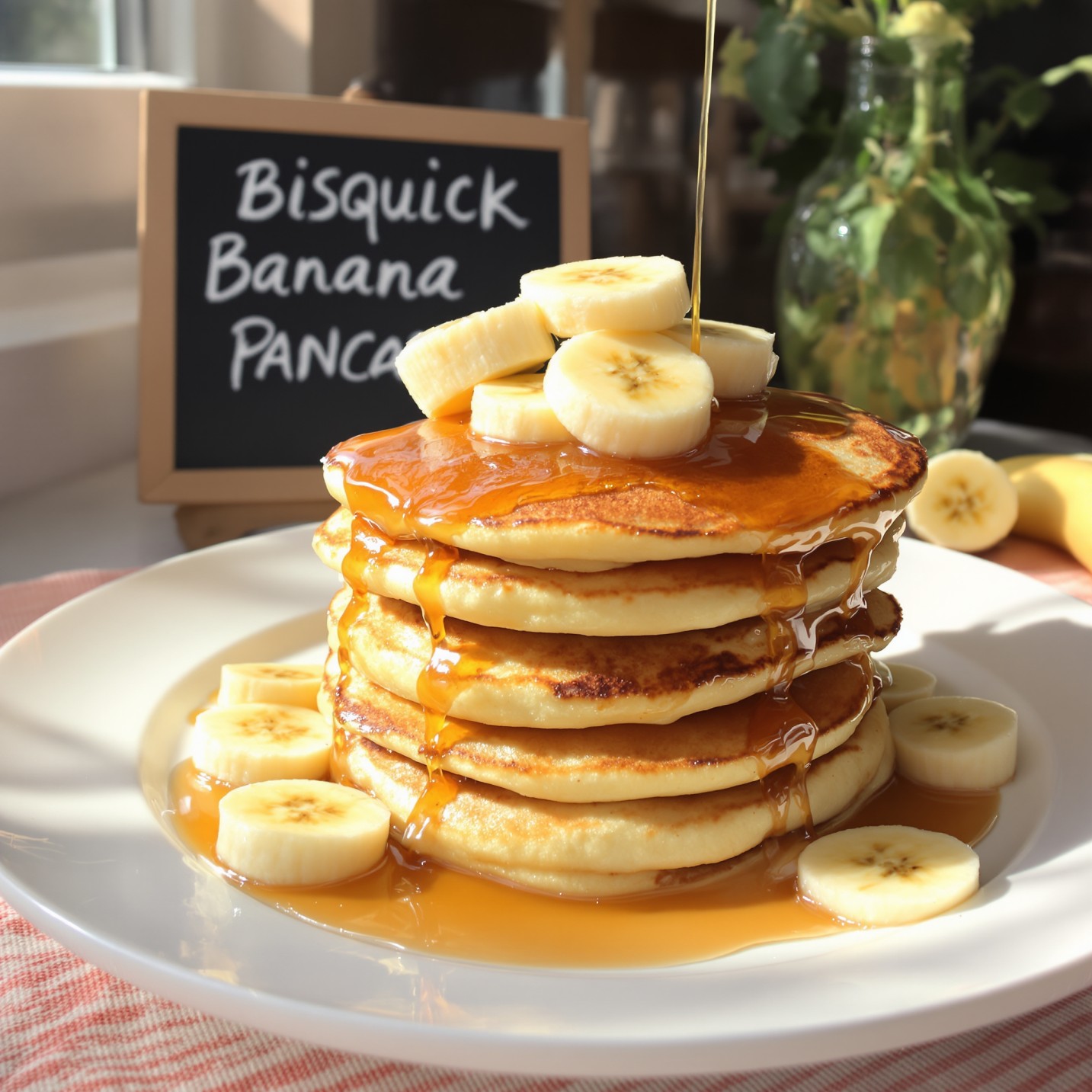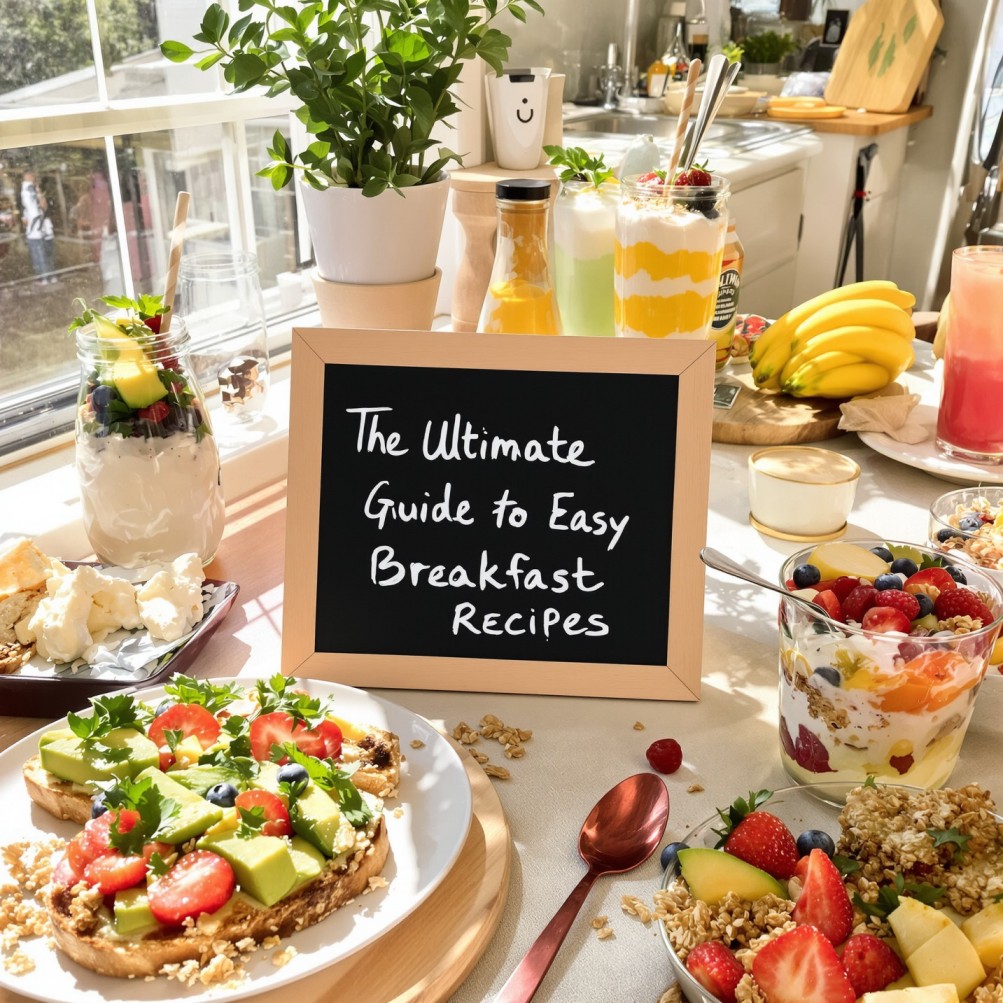

Pancake craving strikes with a vengeance, but a glance reveals an empty milk container. Don’t let breakfast dreams go down the drain! You are wondering, naturally, how to make Bisquick pancakes without milk? Well, buckle down, friend, because the good news is, it’s possible, and chances are, you have a great substitute in your pantry or refrigerator. Let’s jump into how to whip together a batch of light and fluffy Bisquick pancakes when milk isn’t an option.
Pancake Emergency? Bisquick to the Rescue (Even Without Milk!)
Bisquick is a quick option for a healthy breakfast on some mornings. It was designed to be convenient—add liquid and serve! But what if this liquid just so happens to be regular store-bought milk, and those stores are out? Worry not, pancake enthusiasts! There are various alternatives to achieving success in having tasty pancakes, regardless of running out of milk.
Why You Might Need a Milk Substitute for Your Bisquick Pancakes
There may be a variety of reasons why you would require a milk alternative for your pancakes. Maybe your milk has run out, you are following a dairy-free diet due to allergy or intolerance, or you are experimenting with new flavors and textures. Whether or not it is all it takes to ensure pancakes are a success, to know about your alternatives!
Don’t Panic! Making Pancakes Without Milk is Easier Than You Think
Replacing milk in your Bisquick pancake recipe isn’t difficult. Depending on what works best in your situation, you’ve probably got a few viable liquids in your cupboard that will provide a similar, if not better, result.
Your Guide to Milk Substitutes for Bisquick Pancakes
The Simplest Solution: Using Water for Bisquick Pancakes
Believe it or not, water, the simplest milk replacement when preparing pancakes with Bisquick, is something often easily accessible – water! It’s pretty bland, I admit, but with some tweaking, it’s more than possible to enjoy a nice stack of pancakes using Bisquick and water only.
Creamy Alternatives: Exploring Dairy-Free Milk Options (Almond, Soy, Oat, etc.)
If you’re looking for a richer, creamier texture similar to pancakes made with milk, dairy-free milk alternatives are your best bet. Almond milk, soy milk, oat milk, coconut milk (the carton kind, not the canned), and even cashew milk can all be used as a one-to-one substitute for cow’s milk in your Bisquick pancake recipe. Each will impart a slightly different flavor, so feel free to experiment and find your favorite.
Unexpected Heroes: Other Liquid Substitutes You Might Have on Hand (Juice, Coffee!)
Feeling a little more adventurous? You might be surprised to learn that other liquids you have on hand can also work in a pinch! Orange juice can add a lovely citrusy tang, while brewed coffee can give your pancakes a subtle mocha flavor.
Step-by-Step: Making Bisquick Pancakes with Water
Let’s start with the simplest option: water.
The Basic Recipe: Bisquick and Water – That’s It!
For a basic batch of Bisquick pancakes without milk, simply follow the instructions on the box, but substitute water for the milk. The ratio is usually about 2 cups of Bisquick mix to 1 cup of liquid.
Tips for Success: Getting the Right Consistency with Water
You might find that pancakes made with just water are a little thinner than those made with milk.
Start with slightly less water than the box suggests (maybe ¾ cup for 2 cups of mix) and add more gradually until you reach a batter that’s thick enough to coat the back of a spoon.
Flavor Boosters: Enhancing Your Water-Based Pancakes
To add some extra flavor to your water-based pancakes, consider incorporating a teaspoon of vanilla extract, a pinch of cinnamon, or even a tablespoon of sugar into the batter. These simple additions can make a big difference in the final taste.

Step-by-Step: Making Bisquick Pancakes with Dairy-Free Milk
Now, let’s explore using dairy-free milk alternatives.
Choosing Your Dairy-Free Milk: Considerations for Taste and Texture
Consider the flavor profile of the dairy-free milk you choose. Almond milk has a slightly nutty flavor, while oat milk tends to be creamier and more neutral. Soy milk also has a relatively neutral flavor. Coconut milk (from a carton) will add a hint of coconut. Choose the one that best suits your taste preferences.
The Recipe: Substituting Dairy-Free Milk for Traditional Milk
Simply follow the Bisquick box instructions, using your chosen dairy-free milk in place of the cow’s milk. The liquid ratio should generally remain the same.
Extra Tips: Making the Most of Your Dairy-Free Pancakes
Dairy-free milk often has a thinner consistency than cow’s milk. You might need to adjust the amount slightly to achieve the perfect batter. Also, some dairy-free milk can react differently with the leavening agents, so don’t be afraid to experiment a little.
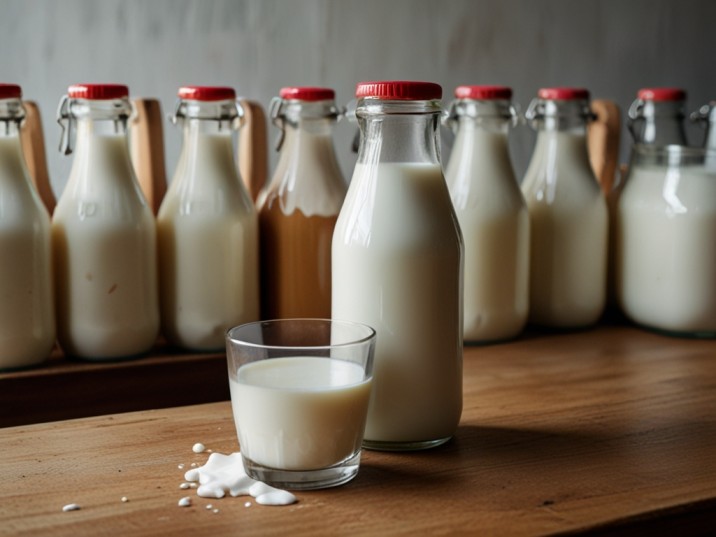
Step-by-Step: Making Bisquick Pancakes with Other Liquid Substitutes
Ready to get a little more creative?
Orange Juice Pancakes: A Zesty Twist to Your Breakfast
Substitute orange juice for the milk in your Bisquick pancake recipe for a bright and tangy flavor. This works especially well if you’re planning to top your pancakes with fresh fruit.
Coffee Pancakes: A Morning Pick-Me-Up in Pancake Form
For coffee lovers, using brewed coffee as your liquid can be a fun way to start the day. The coffee flavor will be subtle but definitely noticeable.
Other Options: Exploring the Possibilities (Broth? Soda?)
While not traditionally used, you could technically experiment with other liquids like vegetable broth (for a savory pancake) or even a bit of clear soda (for extra lightness). However, these are less common and might require some experimentation to get the ratios right.
Expert Tips and Tricks for Milk-Free Bisquick Pancakes
Here are some additional tips to ensure your milk-free pancakes are a success:
Adjusting Liquid Ratios: Finding Your Perfect Pancake Consistency
As mentioned earlier, you might need to slightly adjust the amount of liquid you use depending on the substitute. Pay attention to the batter consistency – it should be thick enough to pour but not too runny.
Considering Other Ingredients: Eggs and Their Role in Texture
If you’re also omitting eggs (as we discussed in a previous article), you’ll need to consider using an egg substitute like applesauce, mashed banana, or a flax egg to provide binding.
The Importance of a Good Non-Stick Pan
Using a good quality non-stick pan or griddle will make cooking your milk-free pancakes much easier and prevent them from sticking.
Recipe Variations and Possible Substitutions (Beyond the Milk!)
Once you’ve mastered the milk-free base, feel free to get creative:
Sweet Additions: Fruits, Chocolate Chips, and More
Fold in your favorite sweet additions like berries, sliced bananas, chocolate chips, or chopped nuts.
Savory Twists: Herbs, Spices, and Cheese (If Dairy Isn’t the Issue)
If you’re only avoiding milk, you can still add savory ingredients like chopped herbs, spices, or even shredded cheese for a different kind of pancake experience.
Egg-Free Options: Making Bisquick Pancakes Without Milk and Eggs
Remember, you can combine the tips from this article with our previous discussion on making Bisquick pancakes without eggs for a completely dairy-free and egg-free version.
Serving and Pairing Suggestions: Completing Your Milk-Free Pancake Meal
Just because they’re milk-free doesn’t mean they have to be boring!
Classic Toppings: Syrup, Butter (or Vegan Butter), and Berries
Enjoy your milk-free pancakes with the classic combination of maple syrup and butter (or a dairy-free alternative like vegan butter). Fresh berries are always a welcome addition.
Creative Combos: Fruit Compotes, Whipped Cream (Dairy-Free?), and Nuts
Enhance your dishes with fruit compotes, dairy-free whipped cream made from coconut cream or other vegan options, and a sprinkle of your favorite nuts.
Savory Sides: Bacon, Sausage, and Eggs (If Eggs Aren’t an Issue)
If you’re only avoiding milk, you can still pair your pancakes with savory sides like crispy bacon, sausage, or eggs for a complete breakfast.
Storage and Reheating Tips: Making the Most of Your Milk-Free Pancakes
Leftover milk-free pancakes can be stored and reheated just like regular pancakes.
Storing Leftover Pancakes: Keeping Them Fresh
Let the pancakes cool completely, and then store them in an airtight container in the refrigerator for up to 3 days.
Reheating for the Best Taste and Texture
Reheat your milk-free pancakes in a toaster, Heat in the oven at a low temperature or use a microwave until thoroughly warmed.

Recipe FAQs: Your Burning Bisquick Pancake Questions (Without Milk!) Answered
Will using a milk substitute change the taste or texture?
Yes, using an alternative milk gives pancakes a slightly different taste and feel compared to using cow’s milk pancakes. The variations will depend on what alternative you are using. Almond milk, as an example, will impart a very subtle nutty flavor to pancakes, while oat milk will add creaminess to pancakes.
Can I use just water to make Bisquick pancakes?
Yes, you can absolutely use just water to make Bisquick pancakes. While the texture might be slightly different (potentially a bit less rich), they will still cook up and be a perfectly acceptable pancake.
What’s the best milk substitute for Bisquick pancakes?
The “best” milk substitute really comes down to personal preference and dietary needs. For a texture closest to regular milk, oat milk or soy milk are often good choices. For a slightly different flavor, almond milk or coconut milk can be delicious. Even water works well in a pinch!
Can I make Bisquick waffles without milk?
Yes, you can typically adapt the Bisquick pancake recipe (using a milk substitute) to make waffles. You might need to adjust the liquid ratio slightly – often requiring a bit more liquid for waffles. Check the Bisquick box for specific waffle instructions and adapt the liquid accordingly.
Do I need to adjust the amount of liquid when using a substitute?
Generally, you can use a one-to-one substitution of your chosen liquid for the milk called for in the Bisquick recipe. However, you might need to slightly adjust the amount to achieve the desired batter consistency. If the batter seems too thick, add a little more liquid. If it seems too thin, add a bit more Bisquick mix.
Video source: MOMables – Laura Fuentes – YouTube
Notes for Milk-Free Pancake Success: The Final Flip
Making delicious Bisquick pancakes without milk is all about knowing your options and being willing to experiment a little. Whether you reach for water, dairy-free milk, or another liquid from your pantry, you can still enjoy a warm stack of pancakes any time the craving strikes!
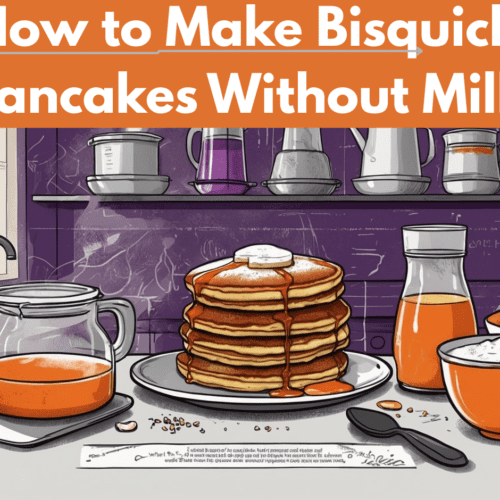
Easy Bisquick Pancakes Without Milk
Equipment
- Mixing Bowl
- Whisk or fork
- griddle or non-stick pan
- Measuring cups
- spoons
Ingredients
- Bisquick Baking Mix
- Your choice of milk substitute water, almond milk, soy milk, oat milk, orange juice, etc.
Instructions
- In a bowl, whisk together ½ cups of Bisquick baking mix and 1 cup of your chosen milk substitute (or water) until just combined.
- Heat a lightly greased griddle or non-stick pan over medium heat.
- Pour ¼ cup of batter per pancake onto the hot pan.
- Cook for 2-3 minutes per side until golden brown and bubbles appear on the surface.
- Serve immediately with your favorite toppings.
Notes
- Serving Suggestions: Serve warm with maple syrup, vegan butter, and your favorite toppings.
- Tips for Success: Start with slightly less liquid and adjust to your desired batter consistency. Don’t overmix. Cook over medium heat
Ready for More Pantry-Friendly Breakfast Ideas?
If you’ve mastered the art of milk-free pancakes, why not explore more delicious and easy breakfast recipes using ingredients you likely have in home? Check out our other articles for inspiration!
- The Ultimate Bisquick Buttermilk Pancake Recipe You Can’t Resist!
- fluffy Bisquick Pancakes: Top easy Tips & Tricks
- Easy Homemade Pancakes: No Bisquick Needed!
- Bisquick Pancakes Without Eggs: Quick & Vegan Recipe!
Share Your Milk-Free Pancake Adventures!
Have you tried making Bisquick pancakes without milk? What’s your favorite milk substitute to use? Share your experiences and any tips and tricks you have in the comments below! We’d love to hear from you.


